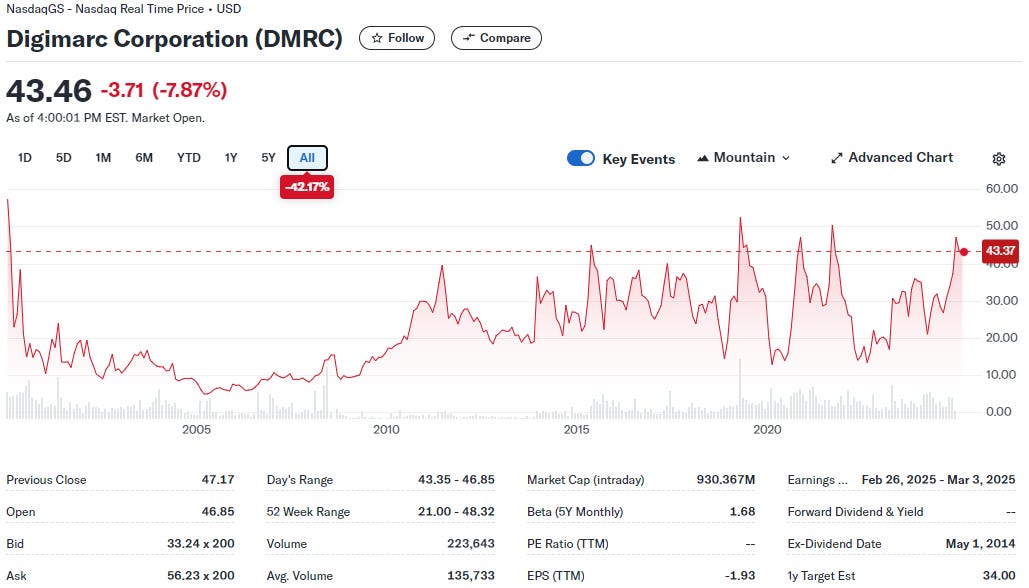Digimarc Corp. - DMRC
After 25 years of hope and, ultimately, disappointment, can this finally be the "transformational" year when they will "revolutionize" an industry?
The last time shares of Digimarc (DMRC) elicited a comment from me was back in 2021, just as the shares were threatening to break out to new all-time highs. The company had recently hired a hedge fund honcho and long-time investor as their new CEO and the market was expecting some major developments with this passing of the torch. Instead, what followed was a rather dramatic 75% sell-off in their shares (after my pointing it out), and after a couple of muddled years, here we find ourselves once again with shares looking to hit new all-time highs. Has anything really changed in the interim?
Digimarc (DMRC - $43.46)
Shares Outstanding: 21.5M
For those new to the story, DMRC is a digital watermarking and barcoding company and boasts of having the largest patent portfolio (about 850 foreign and domestic patents in their most recent 10K, down from over 1100 in 2018, and currently sitting at 820 in their most recent 10Q) in the business. It makes its money by licensing out its patents and technology to both commercial enterprises and governmental agencies, with a variety of Central Banks as their primary source of revenues (40% or so of the total). The rest is derived from commercial contracts from companies like Nielsen where they may help protect an artist’s digital rights, and their technology has been adopted in retail stores by companies such as Walmart (WMT) that use it to track everything from toys to fruit.
Investors, for their part, have always had a love/hate relationship with the Digimarc story; they love the large TAM (total addressable market) that Digimarc’s technology could potentially service, but hate the constant pushouts and delays the company faces in trying to achieve their goals. For example, the more bullish investors out there today are currently preoccupied with DMRC’s ability to crack the trillion dollar gift card market, saying that if they can but capture a cent to a tenth of a cent for every gift card sold, not only can they help reduce fraud across the board but also it could potentially lead to revenues between $20M-$200M a year. Slap a 70% gross margin on that and voila! you’ve got a real business. Multiply this example by a thousand other products and industries and you can spin your way into some truly large numbers.
Take a glance at any long-term chart of the stock and you will see the spikes in enthusiasm inevitably followed by precipitous declines as those hopes have so far always been pushed out further into the distance.
Anyways, back to the story.


